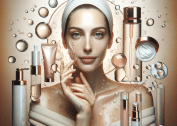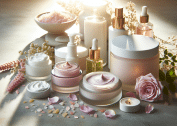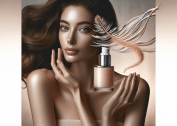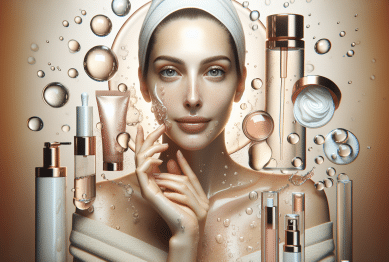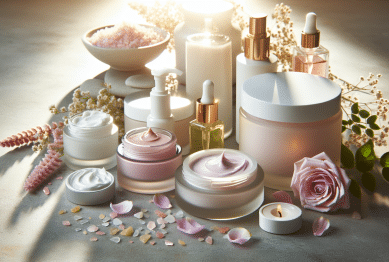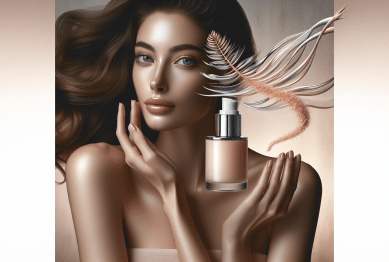Explore how daily hydration rituals can naturally rejuvenate your skin and enhance youthful radiance. Learn about techniques, hydration-rich ingredients, and lifestyle adjustments that can make skin look healthier, smoother, and more vibrant—supported by wellness and beauty research.
Why Hydration Should Be the Focus of Skin Wellness
Hydration is the backbone of glowing skin. Without enough water, skin can appear dull, flaky, and more prone to visible fine lines. When you hydrate effectively, each cell receives the moisture it needs to repair and renew, leading to smoother texture and a subtle, healthy glow. Well-hydrated skin also performs its barrier function better, shielding you from pollutants and irritants in the environment. It’s a foundation for every skin type, and nearly every routine benefits from optimizing moisture. Dermatologists frequently stress that water intake combined with topical moisturizers offers a one-two punch for a more radiant complexion. That is why hydration-focused routines are growing in popularity—and research continues to support their visible benefits (Source: https://www.ncbi.nlm.nih.gov/pmc/articles/PMC4529263/).
Beyond simple water intake, hydration for skin wellness involves quality ingredients and regular self-care. Ingredients like hyaluronic acid and glycerin attract and retain water in the skin’s upper layers, helping to keep your skin plump and soothed throughout the day. Drinking enough fluids is essential, but using serums, gels, or creams enriched with these hydration boosters amplifies your efforts. Establishing routines that combine internal and external hydration can create noticeable changes in how your skin feels and looks. The difference can be more significant than many expect after just a few weeks of consistent care.
Hydration rituals also dovetail with lifestyle choices. Balanced routines, including a diet rich in fruits and vegetables, avoiding harsh skincare products, and protective habits like wearing sunscreen, foster an environment where hydration can thrive. Small changes—like swapping caffeinated drinks for herbal teas or increasing water-rich snacks—may compound over time. The result? Greater elasticity, more even tone, and a complexion that feels supple even in challenging weather. Hydration, in essence, is about giving the skin what it needs to work at its peak.
The Science of Skin Hydration and How It Affects Appearance
Skin is made up of multiple layers, with the outermost layer known as the stratum corneum. This surface barrier is responsible for holding in moisture. When this layer is properly hydrated, skin feels soft, smooth, and resilient. Research suggests that even small decreases in surface hydration can make skin appear wrinkled or stressed (Source: https://www.ncbi.nlm.nih.gov/pmc/articles/PMC3266813/). Scientists measure hydration using sophisticated tools, and studies show that well-hydrated skin bounces back faster after being pressed and is less likely to develop signs of environmental damage. This ability to recover contributes directly to the perception of youthfulness and vitality in your skin’s appearance.
Cells rely on internal water balance to function well. Dehydration can cause cells to shrink, making the skin prone to irritation, dullness, and rough texture. On a molecular level, hydrated skin maintains better structural integrity and has a stronger barrier against irritants. Topical hydrators provide a shield, locking in moisture and keeping skin soft even when facing wind, pollution, or harsh climates. This biological protection offers not only immediate comfort but also long-term retention of your skin’s youthful qualities. The science makes it clear: when skin is hydrated, all of its functions—from renewal to repair—work more efficiently.
Mistakes such as over-exfoliation, frequent use of hot water, or neglecting sunscreen can undermine skin hydration. These habits damage the skin’s barrier, leading to moisture loss. Understanding how the outermost layers work provides insight into building better routines. Layering products correctly, starting with light hydrating serums followed by richer creams, supports lasting moisture retention. This approach mirrors clinical recommendations and reinforces natural defenses in the skin. When the right science shapes skincare habits, the skin’s glow can endure daily stresses—backed by robust hydration from within and without.
Hydration-Boosting Ingredients to Look For (and Why)
Certain ingredients have become synonymous with hydration. Hyaluronic acid, a moisture-binding molecule naturally found in skin, is top of the list. This compound attracts water—each molecule can hold up to 1,000 times its weight in moisture—making it a staple in modern skincare. Glycerin, another powerhouse, is celebrated for its ability to draw water into the upper layers and help maintain that necessary plumpness. Both have been shown in studies to visibly reduce signs of dryness and fine lines. Other effective hydrating agents include urea, panthenol (pro-vitamin B5), and ceramides, which help reinforce the natural barrier (Source: https://pubmed.ncbi.nlm.nih.gov/30595808/).
Natural oils and extracts can offer additional hydration support. Ingredients like squalane (derived from olives), jojoba oil, and aloe vera are rich in emollients and nutrients that work synergistically with the skin’s own processes. These compounds mimic the skin’s natural protective secretions, maintaining softness without feeling greasy. Keeping an eye out for these on ingredient labels—especially in moisturizers and masks—can help target dry patches and keep moisture sealed in. Individual preferences matter, so testing products for compatibility is wise.
Innovative hydration approaches include multi-layered ingredients such as peptides and humectants blended with antioxidants for added benefits. The trend toward water-gel creams and lightweight hydrators aligns with research showing that lightweight textures can deliver just as much moisture as heavier formulas, often without blocking pores. Having awareness of ingredient lists empowers consumers to choose products that fit their specific needs, whether focused on hydration, calming sensitivity, or supporting the skin’s barrier. Ingredients matter—and science shows their combined effects can be transformative.
Lifestyle Changes That Support Skin Hydration and Glow
Hydrated skin is not achieved through creams alone; lifestyle plays a powerful role. The classic advice is to drink six to eight glasses of water daily, but a well-rounded approach involves more nuanced steps. Consuming a variety of fruits and vegetables, such as cucumbers, watermelon, and oranges, contributes natural hydration alongside vitamins and minerals. Reducing salt and alcohol intake supports the body’s natural water retention, helping skin look less puffy or stressed. Even small shifts—an extra piece of fruit, an extra glass of water—can slowly change the moisture balance in the skin, contributing to glow from the inside out (Source: https://www.hsph.harvard.edu/nutritionsource/water/).
Restful sleep and regular exercise promote overall circulation, helping nutrients and oxygen flow to the skin and clear away dullness. Sweating through moderate activity is known to help the skin purge toxins, but it must be balanced with replenishing fluids lost through sweat. Stress management, through mindfulness practices or simple breathing techniques, also reduces the risk of skin dehydration triggered by hormonal spikes. All these practices, woven into a daily routine, slowly build the foundation for vibrant and soft skin.
Environmental stressors, such as air conditioning, central heating, or pollution, can dry the skin quickly. Counter these by using indoor air humidifiers, taking shorter showers with lukewarm water, and selecting gentle, hydrating cleansers instead of harsh soaps. These simple lifestyle changes help the skin’s natural barrier thrive, boosting both immediate softness and long-term resilience. Investing in these habits is a strategy supported by dermatological studies for healthy, glowing skin, no matter your natural skin type or age.
Recognizing Dehydration: Signs and Solutions
It’s not always obvious when skin is dehydrated. Common indicators include tightness, flakiness, and increased sensitivity. Unlike true dryness, which is a lack of oil, dehydration refers to a lack of water, so even oily skin types can suffer from dullness if water content drops. Some people notice flares of irritation or rough patches as the first clue. Being able to distinguish between dryness and dehydration can be the key to correcting skin imbalances, as solutions may differ. Professionals encourage looking at daily routines for possible culprits—such as harsh cleansers, alcohol in toners, or skipping moisturizer (Source: https://www.aad.org/public/everyday-care/skin-care-secrets/dry/skin-care-dry-skin).
Hydration solutions range from increasing fluid intake to upgrading your skincare regimen. Gentle, hydrating cleansers remove impurities without stripping away necessary moisture. Layering hydrating serums under occlusive creams can make a dramatic difference. Techniques such as misting the skin with thermal water or applying masks rich in humectants provide targeted relief for particularly parched spots. Monitoring progress—whether via feel, look, or even more advanced tools like home skin analyzers—can keep you on track with new routines.
It can help to set reminders to drink fluids and moisturize, especially during periods of air travel, illness, or harsh weather. Avoiding or limiting caffeinated and dehydrating drinks is also wise. Many find that just two weeks of attention to hydration triggers visible change, with skin appearing brighter and smoother. Creating small, sustainable rituals that prioritize moisture can transform your relationship with your skin and help you feel more in control of its wellness journey.
Building a Hydration-Focused Routine That Lasts
A sustainable, hydration-focused skincare routine doesn’t require complicated steps. Simplicity often brings the greatest rewards. After cleansing, consider applying a hydrating essence followed by a serum that fits your skin’s unique needs. This combination infuses the skin with moisture and prepares it to receive a protective moisturizer that locks it in. For most people, a sunscreen in the morning and a nourishing cream at night completes the equation. Consistency amplifies the effect, making visible improvements more likely over time (Source: https://www.womenshealth.gov/healthy-living/healthy-eating/drink-enough-water).
Tailor your routine as needed. In winter or dry indoor environments, layering richer creams and using a humidifier helps prevent water loss. In warmer or humid conditions, lightweight gels and sprays may feel more appropriate. Being mindful of ingredient concentrations and product expiry dates ensures you always put quality, effective products on your skin. Keeping a hydration journal or setting reminders can help make the process second nature—a helpful trick for those establishing new habits.
Ultimately, hydration-focused routines are about more than looking good—they support overall skin health and comfort. Some of the world’s healthiest-looking skin is the result of generations of hydration know-how, passed down and now improved by scientific research. When you find the right blend of habits, products, and lifestyle changes, the skin’s natural glow often follows. A little attention to hydration each day can pay off with comfort, confidence, and radiance for life.
References
1. Proksch, E., & Brandner, J. M. (2015). The Skin: Barrier Function and Water Regulation. In Skin Pharmacology and Physiology. Retrieved from https://www.ncbi.nlm.nih.gov/pmc/articles/PMC4529263/
2. Verdier-Sévrain, S., & Bonté, F. (2007). Skin hydration: A review on its molecular mechanisms. Journal of Cosmetic Dermatology, 6(2), 75–82. Retrieved from https://www.ncbi.nlm.nih.gov/pmc/articles/PMC3266813/
3. Lodén, M. (2019). Role of hydrating agents in the management of skin dryness in atopic dermatitis. American Journal of Clinical Dermatology, 16(6), 501-510. Retrieved from https://pubmed.ncbi.nlm.nih.gov/30595808/
4. Harvard T.H. Chan School of Public Health. (2022). The Nutrition Source: Water. Retrieved from https://www.hsph.harvard.edu/nutritionsource/water/
5. American Academy of Dermatology Association. (2023). Skin care: Keep your skin healthy this winter. Retrieved from https://www.aad.org/public/everyday-care/skin-care-secrets/dry/skin-care-dry-skin
6. Office on Women’s Health, U.S. Department of Health & Human Services. (2023). Drink enough water. Retrieved from https://www.womenshealth.gov/healthy-living/healthy-eating/drink-enough-water


